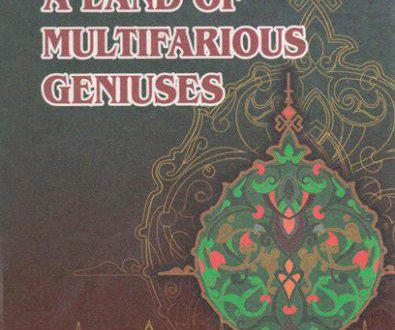Makhdumi A’zam was a great representative of Sufism and the Naqshbandiya order of the 15th-16th centuries. He was a theorist and successor of these trends in religion, a philosopher and a scholar in the fields of morality and law. He was a politician with great influence on public. He also had a rare ability of influencing on man psychologically. At the same time, in accord with the requirements of the Naqshbandiya order, he was interested and engaged in agriculture. He used to invent new types of fruit and vegetables.
Makhdumi A’zam, who lived during the period of declension of the Temurid reign in Central Asia,tried to reconcile the Temurid princes who were fighting for the throne and made political efforts to support Shaybani Khan to unite the state which, as a result of the internal wars, was being divided into several Khanates and Emirates. He also appreciated and supported the activities of Zahiriddin Muhammad Babur in the fields of enlightenment. Being a man who received a good education in the family, he was calm, smart, merciful to the surrounding people and ever ready to support the poor and needy people. He was very keen on science and education. He could not conciliate himself with the attitudes of merciless rulers and proprietors.
His full name was Sayyid Ahmad ibn Mavlana Jalaliddin Khojagi Kasani — Dahbedi Makhdumi A’zam (1461-1542). In this name, a phrase “Makhdumi A’zam” is a penname given by his master Mavlana Muhammad Qazi. It means “a devoted disciple”, “a devout student”. “Makhdumi A’zam” also means the name of one of the three great “A’zams” who lived in the past: Imami A’zam, Ghavsuli A’zam and Makhdumi A’zam.
Makhdumi A’zam was born in 866/1461 in Kasan, the ancient capital city of Fergana. Situated on the banks of the Kasansay River, Kasan was a beautiful city with a cool climate. During the reign of the Karakhanids, this city was one of the most developed centres of the state. Due to its pleasant climate and beautiful gardens, people used to attend this city from all corners of the valley. Today this city is known as Kasansay town.
Makhdumi A’zam died on May 8, 1542 (the month of Muharram 21, 949 A.H.) in a small village called “Dahbed”, not far from Samarkand. According to his will, he was buried under the pear tree in the centre of his garden. According to the information provided in the book “Samariya” by Abu Tahirkhoja: “”Qutbi olam raft voy” (The pole of the world has gone) in Persian means the date of his death, i.e. 949 A.H. The distance between Samarkand and Dahbed is 8 km”. Makhdumi A’zam’s grave was later surrounded by other graves and there were buried his relatives and close friends, devoted disciples, kings, sultans and even princesses who were the followers of this great man. Among them was the sultan of Samarkand Yalangtush Bahadir, who had erected the famous madrasahs “Sherdar” and “Tillak ari” in Samarkand.
Makhdumi A’zam’s father was a well-educated and learned person of his time and had great authority and respect among the public. Therefore, an honourable title “Mavlana” was added to his name and his name sounded as “Mavlana Jalaliddin”. Mavlana Jalaliddin’s father was Sayyid Jalaliddin, who was the son of Sayyid Burhaniddin Khoja. Sayyid Burhaniddin Khoja was the son of Sayyid Amir Majnun and the grandson of Sayyid Burhaniddin Qilich. Sayyid Burhaniddin Qilich was one of the famous sheikhs of Sufism in religion. Generally speaking, in accord with the information provided in the genealogical tree kept in Makhdumi A’zam’s home and other reliable historical sources, Makhdumi A’ zam is considered to be the 22nd generation of His Excellency Prophet Muhammad (saas). As the successors of Prophet Muhammad (saas) are highly respected by the Muslim public, Makhdumi A’zam’s family was also honoured by the Muslims. According to the research of a scholar Ashirbek Muminov, Makhdumi A’zam’s mother was considered to have descended from the successors of His Eminency Ahmad Yassavi and his uncle was a trader.
 Imom Buxoriy xalqaro ilmiy-tadqiqot markazi bukhari.uz
Imom Buxoriy xalqaro ilmiy-tadqiqot markazi bukhari.uz










